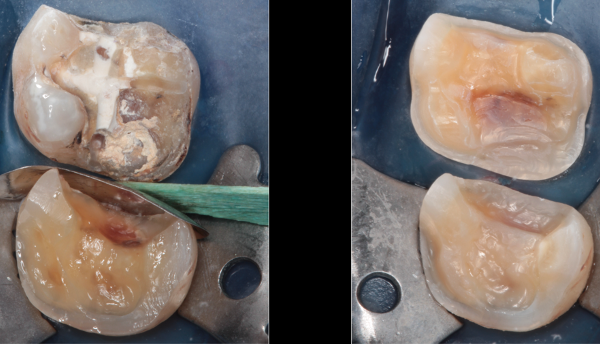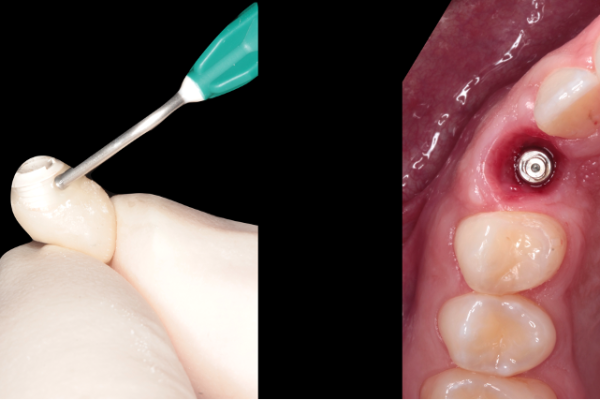In this interview, Dr Frank-Michael Maier discusses direct restorative techniques, which for him are an integral part of everyday practice and the basis for minimally invasive and defect-oriented clinical action.
In the field of direct restorations, he pays attention to high-quality materials that are universally applicable to various process technologies (eg injection moulding, snowplow, tunnel preparation or stamp technique).
At the same time, it should be possible to achieve reproducibly good results in an efficient way. In this interview, the dentist explains why he prefers the high-strength universal composite G-ænial Universal Injectable (GC) and what advantages the thixotropic viscosity of the material has for everyday practice.
Dr Maier, why do you prefer the composite G-ænial Universal Injectable (GC) as a direct restorative?
The decision is based on various reasons. One of them is universal applicability, although other materials also offer this. However, what immediately impressed me about G-ænial Universal Injectable is its excellent polishability.
After many years of working with a composite of another manufacturer, I was pleasantly surprised by the simplicity and quality of the polish at G-ænial Universal Injectable.
Without much effort and with just a few steps, the surface shines and more importantly, the gloss in the long term. That was the decisive aspect for me to switch. Soon I got to know and appreciate further advantages of the injectable composite.
Especially for use in injection or stamp technology with transparent silicone keys as well as in terms of abrasion stability, the material offers clear advantages.
For some time, I was looking for a composite with the appropriate viscosity that also allows me a comfortable handling. I found this in G-ænial Universal Injectable.

What does this mean in concrete terms for everyday practice?
The material composition makes G-ænial Universal Injectable universally applicable. I appreciate the fact that I can work with only a few materials in practice. On the one hand, this simplifies logistics and warehousing. On the other hand, it brings more calm to the treatment process.
Thanks to the thixotropic viscosity, G-ænial Universal Injectable can be used efficiently in a wide variety of filling techniques and this significantly simplifies my everyday work.
The material remains stable and dimensionally stable during application, but is still flowable during modelling. For example, I use the composite for the semi-direct injection moulding technique (IMT).
For this purpose, a silicone key is made of crystal clear silicone (Exaclear, GC) based on a wax-up. The composite is then injected via small injection channels and light-cured through the transparent key.
This technique works really well with G-ænial Universal Injectable due to the right thixotropic consistency.

For which indications do you predominantly use G-ænial Universal Injectable?
When I think about it, for a lot of different indications. I work with various restoration techniques, eg the stamp, snowplow or injection moulding technique.
I benefit in all situations from the remarkable flow behaviour of the composite – very stable yet with a little pressure, a thin flow.
Another example is the minimally invasive tunnel preparation, in which the material can be “pressed in” well. I also prefer the material for box elevation and as a fissure sealer, applied with a thin nozzle.
In addition, I work in implantology with G-ænial Universal Injectable, eg I use the material for the individual shaping of the soft tissue or the fixation of screw cylinders in long-term provisionals.
Experience has shown that the dense surface results in excellent tissue compatibility.
Similarly, I use the material in the ovate-pontic technique for the step-by-step shaping of the emergence profile. This creates the impression of a tooth arising from the socket.
To what extent is the composite suitable for intraoral repairs?
Intraoral repairs of composite as well as glass-ceramic restorations work well, with its success standing or falling with the surface conditioning.
In my hands, the intraoral tribochemical roughening of the restoration and silanisation have proven itself. Due to the good colour adjustment and polishability, inconspicuous repairs can be made.
And what experiences do you have in terms of the quality of results?
G-ænial Universal Injectable is very aesthetic, although I expect this from all modern composites. Thanks to the 16 shades and 3 translucency levels, almost any situation can be covered in everyday life and work in a highly aesthetic way.
I particularly like the shades for imitating the natural enamel. And once again I would like to emphasise the excellent polishability with little effort; the basis for the long-term success of the care.
With regard to the edge stability and the abrasion behaviour, I can only report positive things from the recalls.
What would you like to instil among your colleagues who are interested in G-ænial Universal Injectable?
Working with the ‘right’ composite is not a primary success criterium, but an important building block for direct restorative restorations.
In my opinion, the basis for success is the correct application of adhesive technology, the design and the knowledge of various process technologies. This way, one can act minimally invasively and based on requirements.
The advantage of a composite like G-ænial Universal Injectable is the universal use and thus the ideal product for my everyday practice.
Due to the injectability of the material, innovative processes as well as proven restorative techniques can be implemented first-class.
The thixotropic viscosity of the material ensures very good handling; the good, efficient polishability is simply fun and the quality of the results is excellent.
For more information visit www.europe.gc.dental/en-IQ/products/gaenial.



